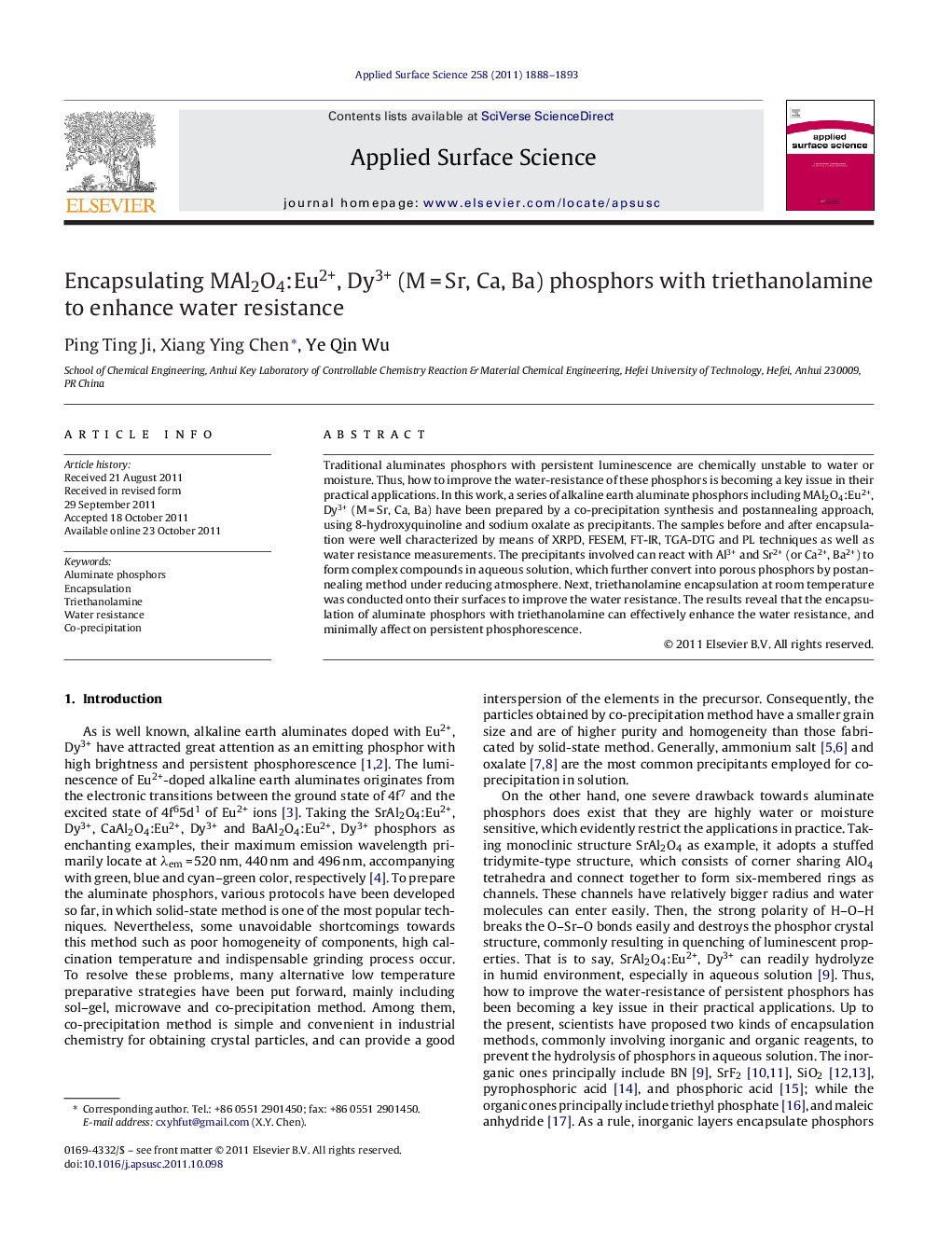| Article ID | Journal | Published Year | Pages | File Type |
|---|---|---|---|---|
| 5366812 | Applied Surface Science | 2011 | 6 Pages |
Traditional aluminates phosphors with persistent luminescence are chemically unstable to water or moisture. Thus, how to improve the water-resistance of these phosphors is becoming a key issue in their practical applications. In this work, a series of alkaline earth aluminate phosphors including MAl2O4:Eu2+, Dy3+ (MÂ =Â Sr, Ca, Ba) have been prepared by a co-precipitation synthesis and postannealing approach, using 8-hydroxyquinoline and sodium oxalate as precipitants. The samples before and after encapsulation were well characterized by means of XRPD, FESEM, FT-IR, TGA-DTG and PL techniques as well as water resistance measurements. The precipitants involved can react with Al3+ and Sr2+ (or Ca2+, Ba2+) to form complex compounds in aqueous solution, which further convert into porous phosphors by postannealing method under reducing atmosphere. Next, triethanolamine encapsulation at room temperature was conducted onto their surfaces to improve the water resistance. The results reveal that the encapsulation of aluminate phosphors with triethanolamine can effectively enhance the water resistance, and minimally affect on persistent phosphorescence.
Graphical abstractEncapsulation of aluminate phosphors with triethanolamine can effectively enhance the water resistance.Download full-size imageHighlight⺠Phosphors were prepared by a co-precipitation synthesis and postannealing approach. ⺠8-Hydroxyquinoline and sodium oxalate were used as precipitants. ⺠Encapsulation of phosphors with triethanolamine can enhance the water resistance.
